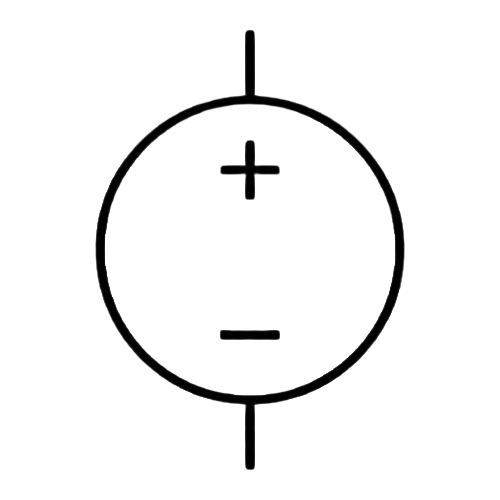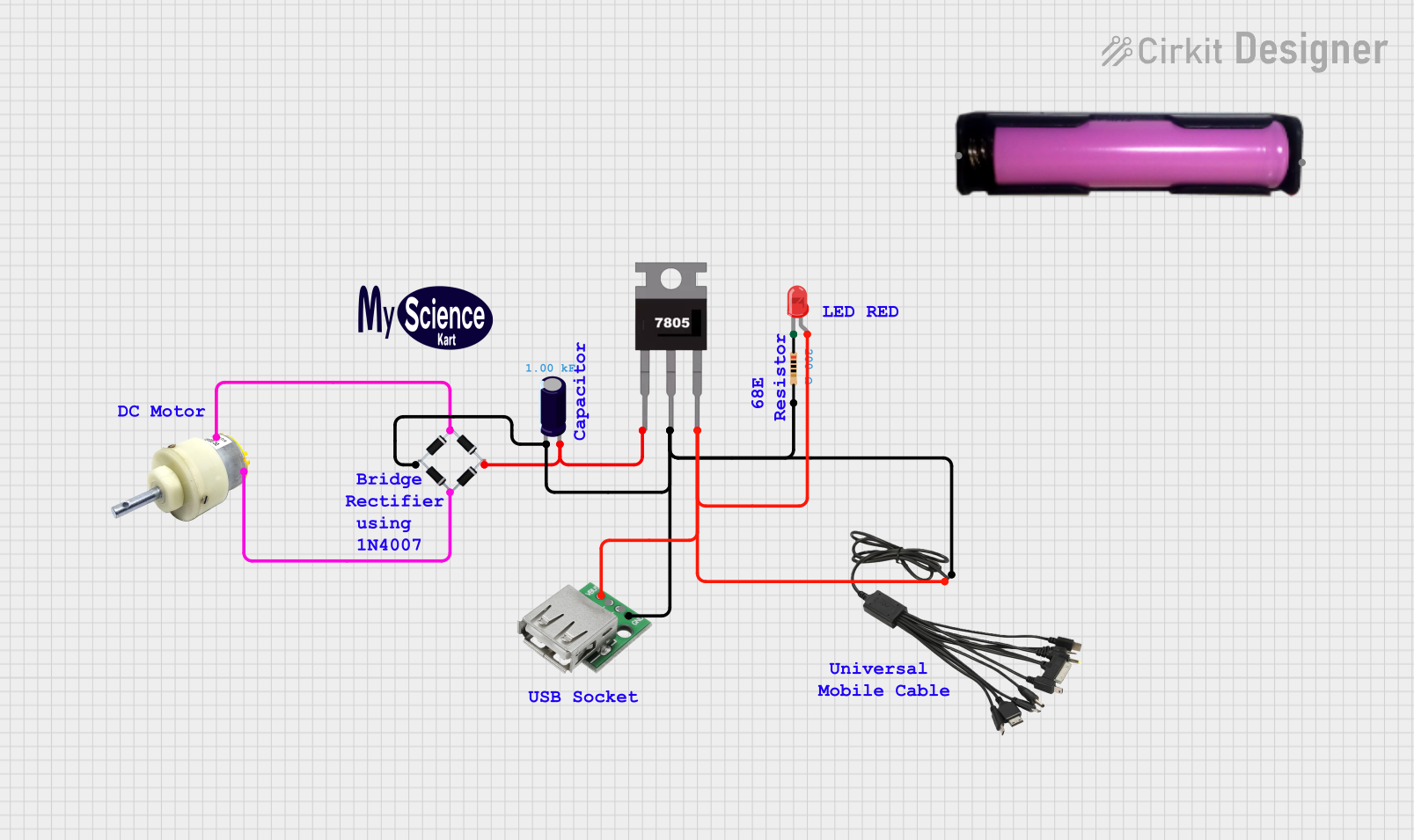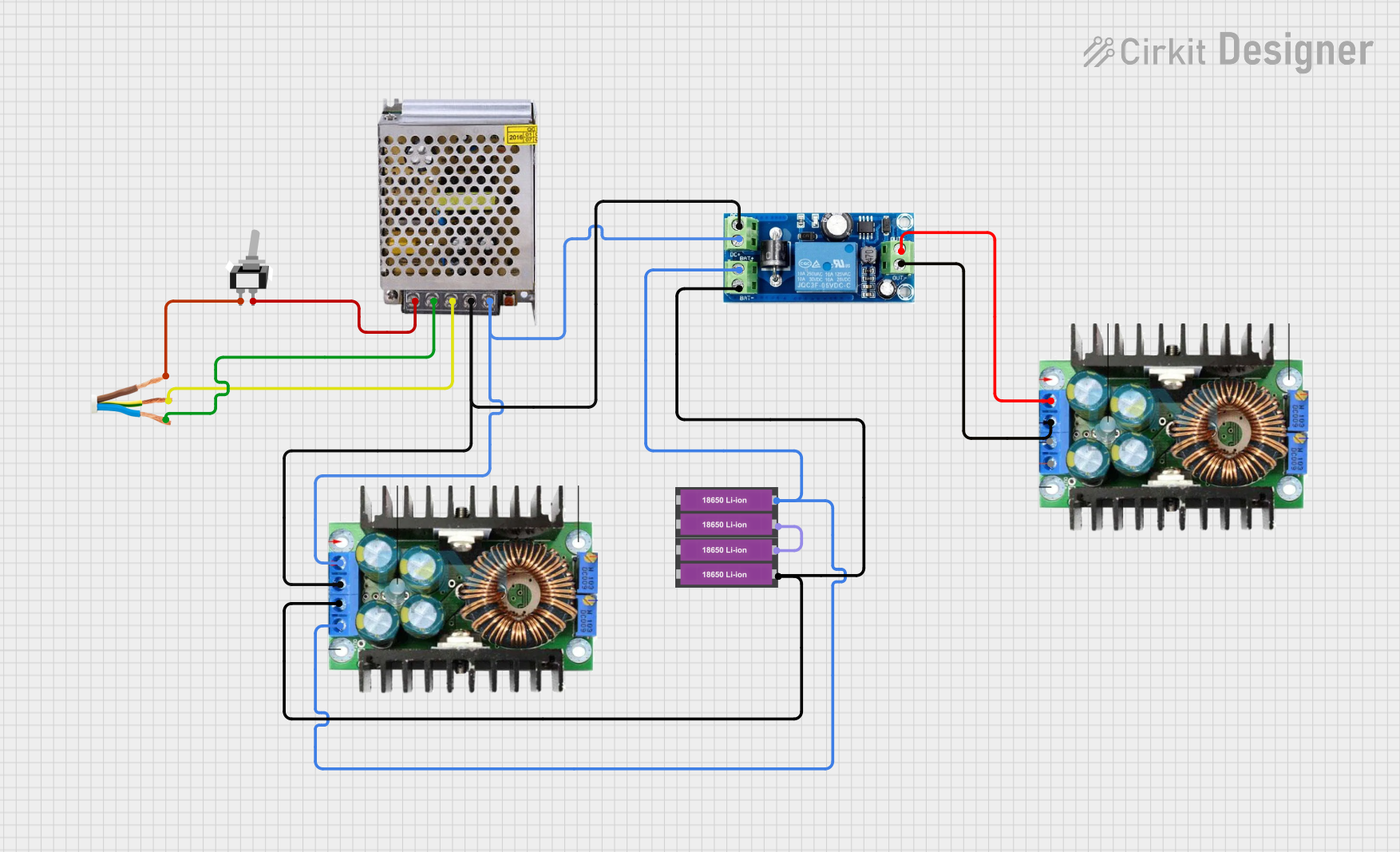
How to Use DC Power Source: Examples, Pinouts, and Specs

 Design with DC Power Source in Cirkit Designer
Design with DC Power Source in Cirkit DesignerIntroduction
The DC Power Source (Manufacturer: JJY, Part ID: DC_Power) is a device designed to provide a constant direct current (DC) voltage for powering electronic circuits and components. It is an essential component in electronics, offering a stable and reliable power supply for a wide range of applications.
Explore Projects Built with DC Power Source

 Open Project in Cirkit Designer
Open Project in Cirkit Designer
 Open Project in Cirkit Designer
Open Project in Cirkit Designer
 Open Project in Cirkit Designer
Open Project in Cirkit Designer
 Open Project in Cirkit Designer
Open Project in Cirkit DesignerExplore Projects Built with DC Power Source

 Open Project in Cirkit Designer
Open Project in Cirkit Designer
 Open Project in Cirkit Designer
Open Project in Cirkit Designer
 Open Project in Cirkit Designer
Open Project in Cirkit Designer
 Open Project in Cirkit Designer
Open Project in Cirkit DesignerCommon Applications and Use Cases
- Powering microcontrollers, sensors, and modules in embedded systems
- Supplying voltage to DC motors and actuators
- Testing and prototyping electronic circuits
- Charging batteries and portable devices
- Providing power for LED lighting systems
Technical Specifications
The following table outlines the key technical specifications of the JJY DC Power Source:
| Parameter | Value |
|---|---|
| Input Voltage Range | 100-240V AC, 50/60Hz |
| Output Voltage Range | 3.3V, 5V, 9V, 12V (selectable) |
| Output Current | Up to 2A |
| Power Rating | 24W (maximum) |
| Output Type | Constant DC Voltage |
| Efficiency | ≥85% |
| Protection Features | Overvoltage, Overcurrent, Short Circuit |
| Operating Temperature | -10°C to 50°C |
| Dimensions | 100mm x 60mm x 40mm |
| Weight | 150g |
Pin Configuration and Descriptions
The DC Power Source typically includes the following connectors:
| Pin/Connector | Description |
|---|---|
| Input AC Connector | Standard AC input for 100-240V AC power |
| Output DC Connector | Positive (+) and Negative (-) terminals for DC output |
| Ground (GND) Terminal | Ground connection for circuit safety and stability |
| Voltage Selector Switch | Allows selection of output voltage (3.3V, 5V, 9V, 12V) |
Usage Instructions
How to Use the DC Power Source in a Circuit
- Connect the Input Power: Plug the AC input connector into a standard wall outlet (100-240V AC).
- Set the Desired Output Voltage: Use the voltage selector switch to choose the required output voltage (e.g., 5V for microcontrollers).
- Connect the Output Terminals:
- Connect the positive (+) terminal to the positive rail of your circuit.
- Connect the negative (-) terminal to the ground (GND) rail of your circuit.
- Power On the Device: Turn on the power source and verify the output voltage using a multimeter before connecting sensitive components.
- Monitor the Circuit: Ensure the connected load does not exceed the maximum current rating (2A).
Important Considerations and Best Practices
- Voltage Selection: Always double-check the voltage setting before connecting the power source to your circuit to avoid damaging components.
- Current Limitation: Ensure the total current draw of your circuit does not exceed the 2A limit to prevent overheating or triggering the overcurrent protection.
- Heat Dissipation: Place the power source in a well-ventilated area to avoid overheating during prolonged use.
- Polarity: Verify the polarity of the output connections to prevent reverse polarity damage to your circuit.
- Safety: Avoid touching the terminals while the power source is active to prevent electric shock.
Example: Using the DC Power Source with an Arduino UNO
To power an Arduino UNO with the DC Power Source, follow these steps:
- Set the output voltage to 5V using the voltage selector switch.
- Connect the positive (+) terminal of the power source to the VIN pin on the Arduino.
- Connect the negative (-) terminal of the power source to the GND pin on the Arduino.
- Power on the DC Power Source.
Here is an example Arduino code to blink an LED while powered by the DC Power Source:
// This code blinks an LED connected to pin 13 of the Arduino UNO.
// Ensure the DC Power Source is set to 5V and connected properly.
void setup() {
pinMode(13, OUTPUT); // Set pin 13 as an output pin
}
void loop() {
digitalWrite(13, HIGH); // Turn the LED on
delay(1000); // Wait for 1 second
digitalWrite(13, LOW); // Turn the LED off
delay(1000); // Wait for 1 second
}
Troubleshooting and FAQs
Common Issues and Solutions
| Issue | Possible Cause | Solution |
|---|---|---|
| No output voltage | Power source not plugged in or turned off | Verify the AC input connection and power switch |
| Incorrect output voltage | Voltage selector switch set incorrectly | Check and adjust the voltage selector switch |
| Circuit not powering on | Loose or incorrect connections | Verify all connections and ensure proper polarity |
| Overheating of the power source | Exceeding current limit or poor ventilation | Reduce the load or improve ventilation |
| Output voltage fluctuating | Overcurrent or short circuit in the load | Check the load for faults and reduce current draw |
FAQs
Can I use this power source to charge a 12V battery?
- Yes, but ensure the battery charging current does not exceed 2A, and monitor the charging process to prevent overcharging.
What happens if I exceed the 2A current limit?
- The overcurrent protection will activate, shutting down the output to protect the power source and connected devices.
Is the power source compatible with sensitive electronics?
- Yes, the DC Power Source provides a stable output voltage suitable for sensitive electronics like microcontrollers and sensors.
Can I use this power source outdoors?
- No, the power source is not weatherproof and should only be used in dry, indoor environments.
By following this documentation, you can safely and effectively use the JJY DC Power Source (Part ID: DC_Power) in your electronic projects.